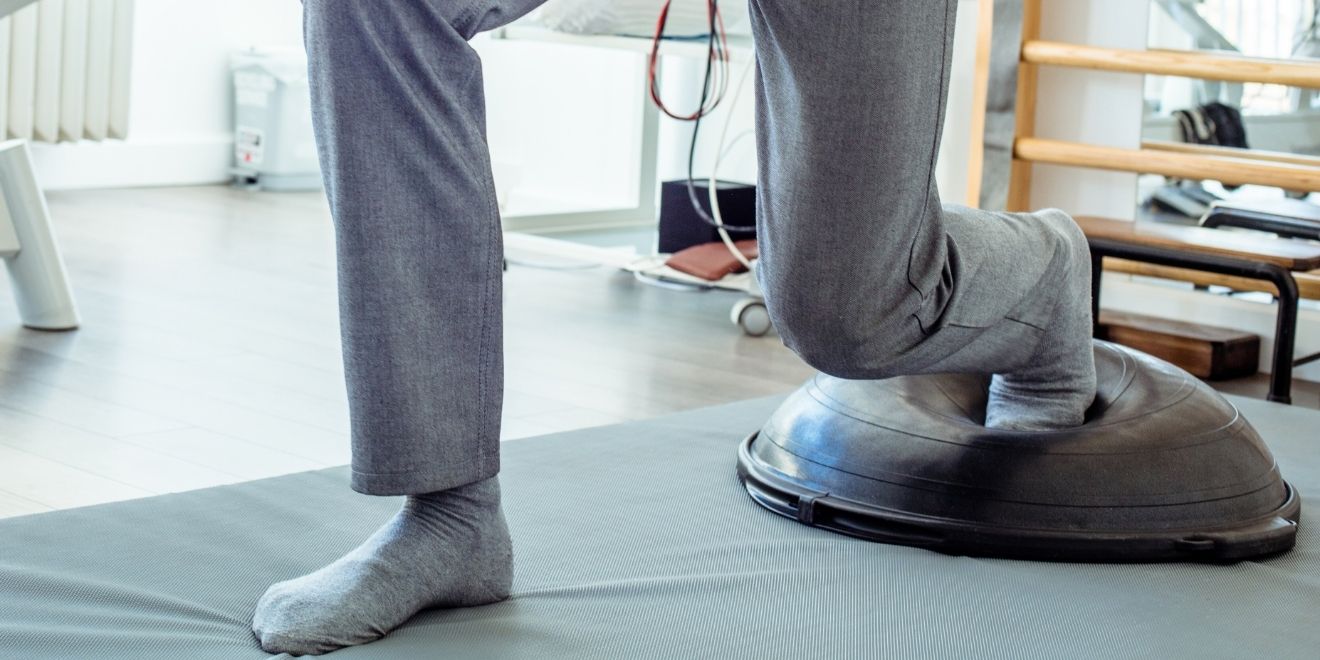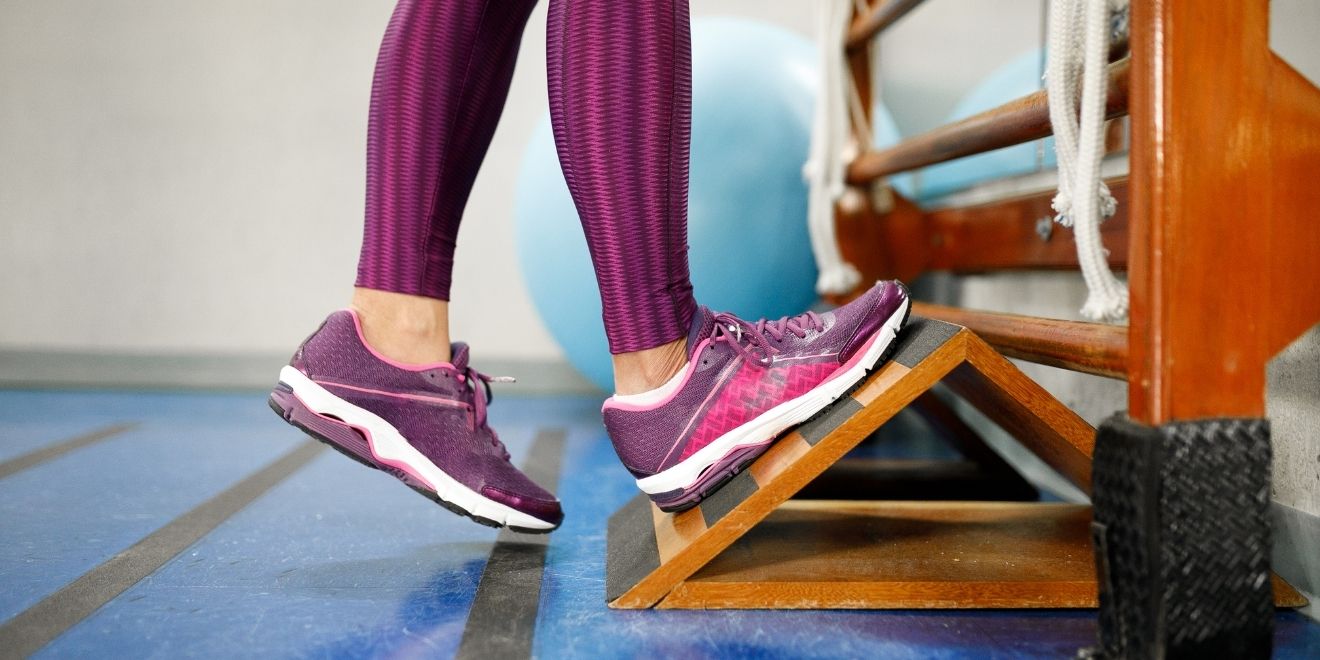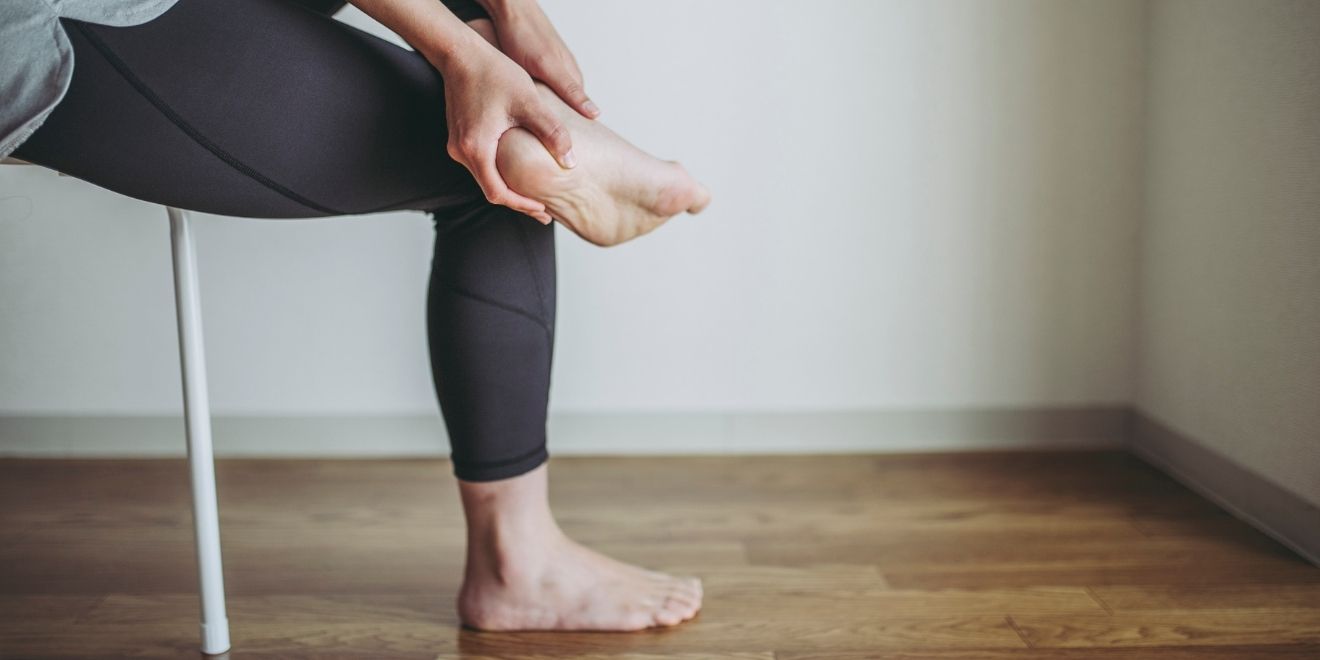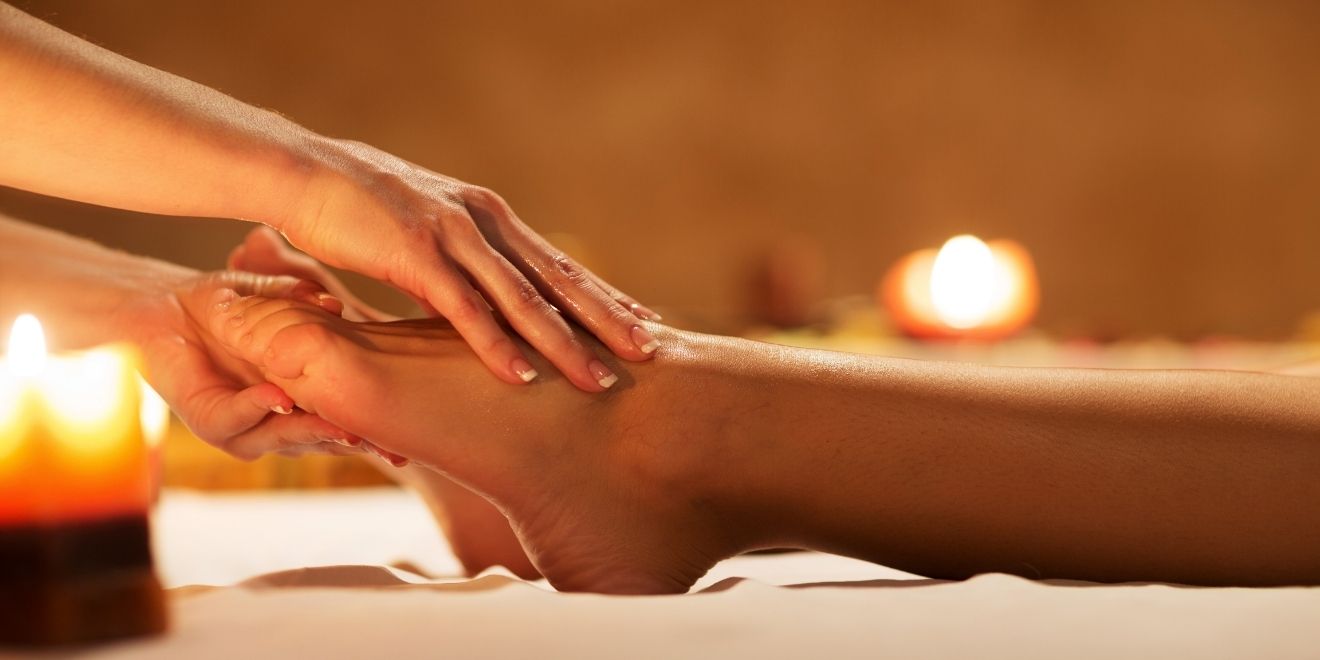During cardio, your feet are your main support, so you must support them back to prevent injuries and unnecessary pain.
Whether you’re running, attending a Zumba class, or a dance workout, your feet must be able to handle the hard impact and pressure you put them through every time you work out.
Don’t take your feet for granted, give them the care and attention they so rightfully deserve by following our 5 tips to minimize foot pain while doing cardio.

1. Wear Proper Shoes
Let’s start with the basics – choose the right shoes. I cannot stress enough how important it is to wear the right shoes while doing cardio. Without proper support, the repetitive impact your feet must face during every cardio workout can cause significant problems including spasms, tendonitis, plantar fasciitis, and heel spurs.
If you care for your feet and wear proper supporting shoes, you will not only prevent any of these problems but also achieve optimal performance since you will be able to drastically minimize foot pain while doing cardio exercises.
It’s natural to want to turn sports shoes into multi-tasking shoes. However, not all sports shoes are the same. For example, running shoes are completely different than the shoes you would use during weightlifting. It is best to choose shoes for a specific workout to protect yourself from injury and minimize foot pain.
When choosing shoes, make sure they allow proper foot flexibility but also support for optimal movement. When trying on shoes for cardio, make sure they support the arch and allow you to bend your feet without too much effort.

2. Stretch Your Feet
Every workout must begin with stretching. If you’re a fitness enthusiast, you probably stretch your legs, arms, and back before every workout. But what about your feet? Believe it or not, feet need stretching too, especially if you’re doing cardio.
If you have no idea how to stretch your feet properly, we’ve got you covered! Start by rolling a tennis ball underneath the soles of each foot. This is a great way to relieve the tension in your feet and it’s particularly a great way to prevent inflammation if you have plantar fasciitis.
If you want to strengthen your feet, do balance exercises barefoot. Numerous yoga poses can help you build strength in your feet. Look for those that require you to stand on both feet, with your weight distributed evenly, such as mountain pose. Use a yoga mat so you don’t slip on the floor.

3. Rest In Between High-Impact Cardio Exercises
Even if you feel you can keep going, take a short break in between high-impact exercises and allow your feet to rest. Most foot-related injuries are caused by high-impact exercises, thus it’s best to be mindful and not force your feet to deal with excessive force.
Rest is not for the weak; it’s for those who want to stay safe during cardio workouts. When your feet are overworked, you’ll be more prone to taking the wrong step, fall out of form, or lose your balance. The repetitive strain and stress you put on your feet will build up and eventually you won’t be able to do your regular exercises. And, even if you push yourself, your performance will decrease and so will your endurance. It’s also common to notice poor agility and slow reaction times in people who don’t take breaks in between exercises.
Another great tip is to alternate your cardio workouts with low-impact exercises, such as yoga or Pilates. Also, don’t forget about rest days! Your intuition may tell you that resting days will decrease your performance but that couldn’t be further from the truth. In fact, rest days increase energy levels and prepare your body for consistently successful cardio workouts. So, if you want to stay motivated to exercise, don’t ignore the importance of rest.

4. Don’t Ignore the Pain
No pain, no gain, right? Not really! Soreness is normal while working out but pain not so much. Especially when your feet, joints, and other sensitive areas start to hurt. It’s important to know your limits, know when to stop, and when to modify exercises to prevent injuries. Sure, the goal is usually to push your limits, but you shouldn’t injure yourself to achieve your goals.
Due to the impact cardio exercises have on the feet, it’s normal to experience a few aches and pains here and there. But if the pain starts to get worse, you must stop. Otherwise, you risk an injury that will force you to take a break from cardio for a longer period. You’re doing yourself a disservice if you don’t address the pain and adjust. On the other hand, when you do it, you build strength gradually and you will be able to achieve your goals without any injuries.

If the worst-case scenario happens and you injure your feet, allow them the necessary time to heal. Pushing through the pain and ignoring an injury will only prolong the injury and your feet will need more time to heal. That is if you don’t end up making the injury worse, which will put your goals even further behind.
5. Pamper Your Feet
In this context, pampering your feet doesn’t mean going to a spa; it means taking care of the problems as they occur. Even though an occasional visit to the spa clearly can’t hurt, so you can try that too.
After a cardio workout, massage your feet for 10-15 minutes to alleviate any aches and pains. The massage also stimulates the nerves, which helps you gain more foot awareness and allows you to easily determine how your feet hit the ground during a cardio workout. To massage your feet, you can either use a foot massage tool to roll over the arch and the soles of your feet or a frozen bottle of water.
If you have plantar fasciitis and any pain or inflammation occurs post-workout, ice the arch and the heels first and then massage the affected areas. Calf stretches can also help alleviate foot pain.
For Achilles tendinitis, apply ice post-workout and stretch the calves. The pain and inflammation in the Achilles tendon can also be alleviated by wearing a heel cup in the shoes during the workout.
If you experience pain or inflammation at the base of the toes while you’re working out, start using cushion inserts. The cushions will absorb some of the impacts when you’re working out. Post-workout, ice, and massage the affected area.
Final Thoughts
If you want to minimize foot pain while doing cardio, you must keep your feet happy! This means stretching, wearing the right shoes, pampering your feet, and, most importantly, knowing when to take a break or stop. Your pain will significantly decrease or even go away completely if you do these simple things.




